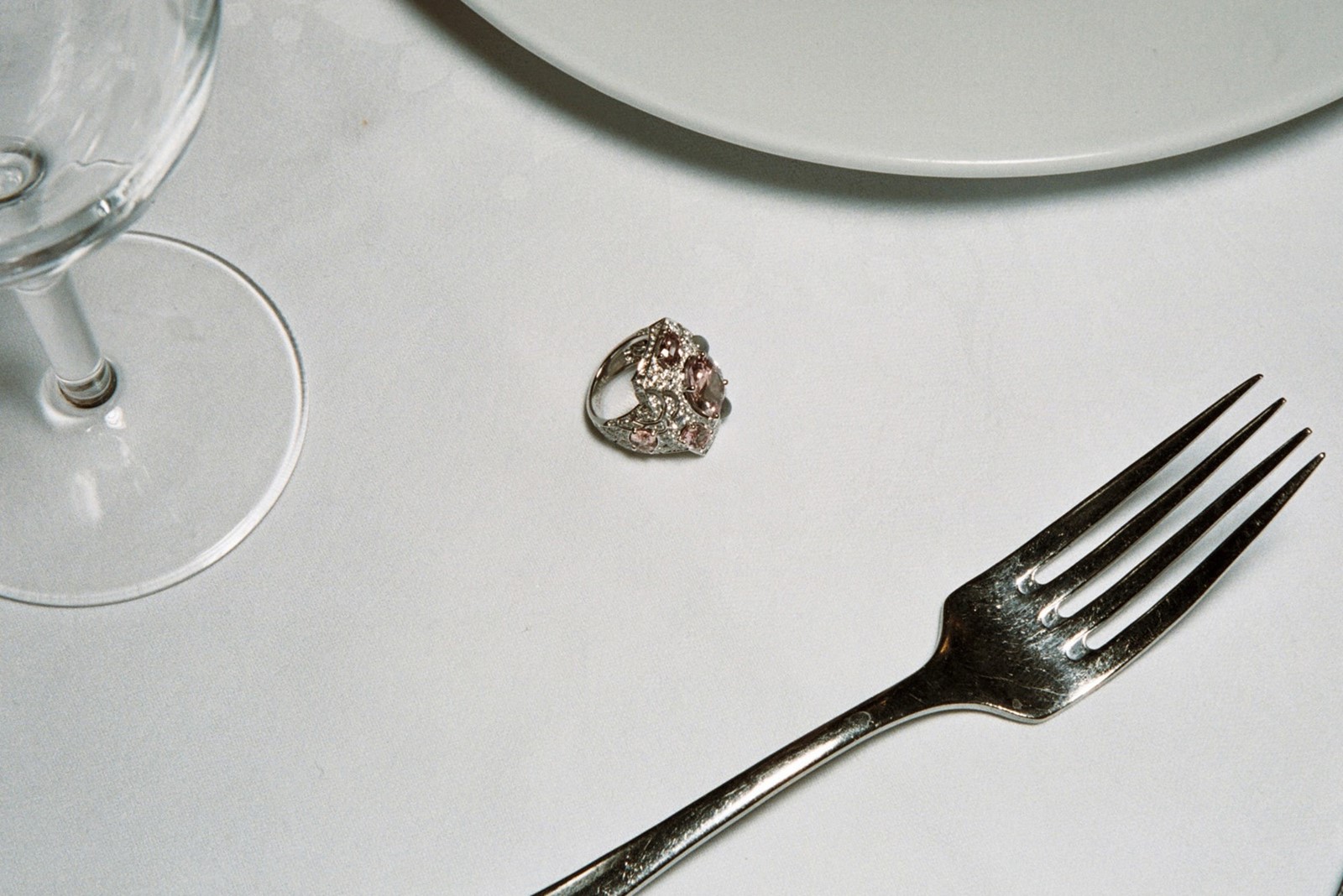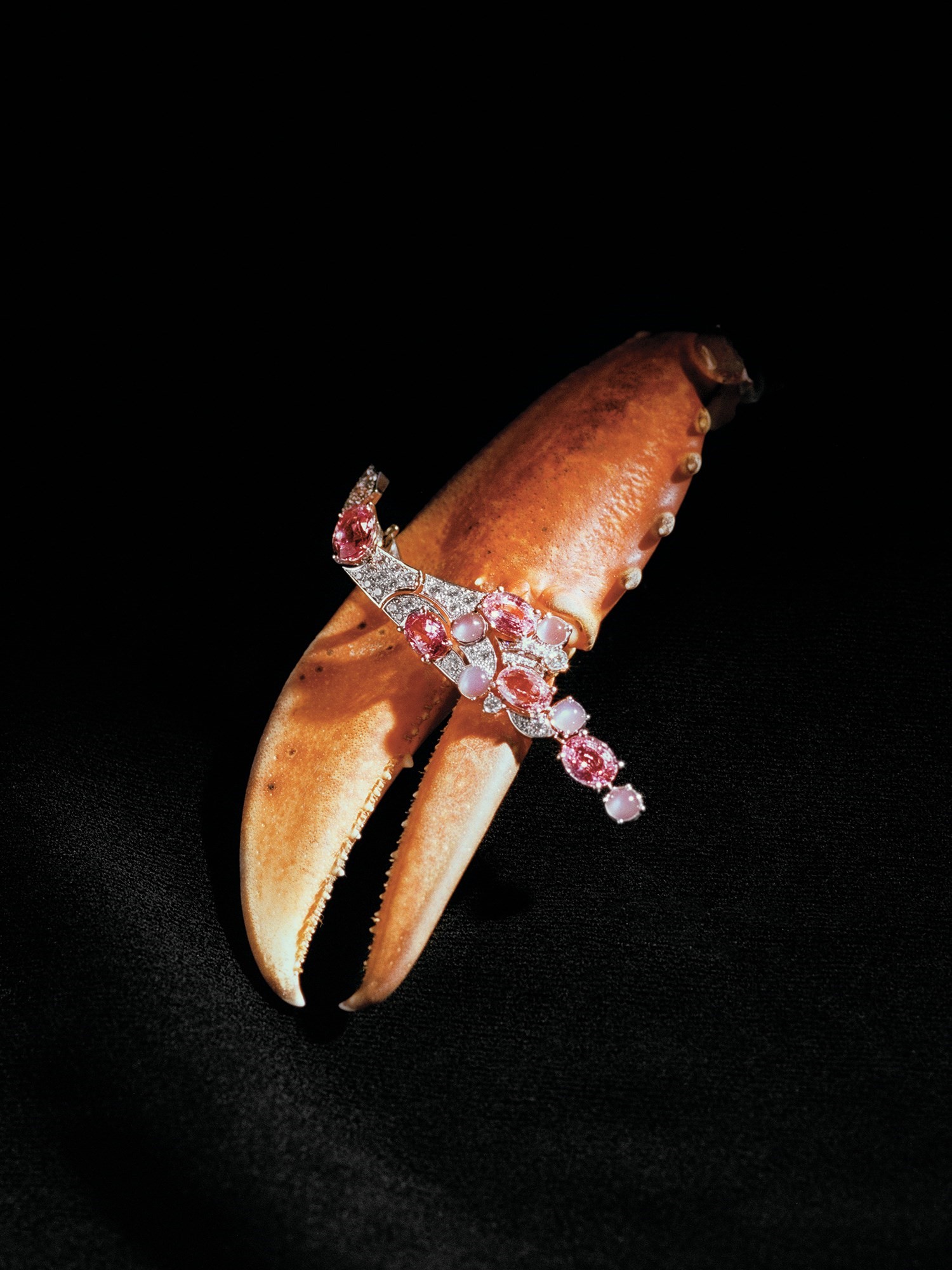A mere stone’s throw away from Place Vendôme, home to fine jewellery courtesy of any great name one might care to mention, is the Chanel high jewellery atelier. If that house’s own glittering store – which sits in pride of place in the magical square – is clad in the customary ebony and beige and in a discreetly grand manner, the atelier is a rather more obviously functional affair: a mix of the ultra high-tech and the artisanal with very little in between which is remarkable. It goes without saying that doors unlock and lock behind visitors to protect the precious contents: these, after all, are some of the most precious contents in the world. Less obvious, perhaps, is the warren of tiny rooms, each dedicated to its own specialist endeavour, that have more in common with the time-honoured modesty of the haute couture workshops in the eaves of the predominantly 18th-century buildings at the centre of the French capital. There is a tiny space set aside for creating the hand-carved wax models from where all else springs, studios peopled by artisans chiselling the most exquisitely delicate pieces, from a lacy collier to the jewelled clasp of an especially fine purse, and even an entire room dedicated to polishing. Strands of fine cotton ribbon are pushed through tiny spaces to ensure every surface is glittering and each stone shown off at its very best.
The Chanel high jewellery workshops, dedicated entirely to prototypes, exceptional sets and special orders, opened at the end of 2012. It not only serves as purveyor of fine jewellery to the most discerning client but also as a laboratory of ideas from where all else sparkling develops. With that in mind, it’s unsurprising that it takes around a year to create a high jewellery collection. These, the jewel in the crown of, well, of jewellery, are not seasonal – although two are produced every 12 months and launched during the haute couture season in Paris in January and July. They then travel the world for two years and are shown only to those privileged enough to consider investing in them. At least some of the pieces are one-offs: the stones in question limit production entirely. There aren’t two of the same colour, size, texture and quality in existence. No more than around five models of any high jewellery piece will ever be made. Prices are strictly on application. It would be considered nothing short of vulgar to discuss this with anyone but the client. And just like haute couture, high jewellery is created predominantly by hand, although should a certain collection benefit from computer technology – if a very particular motif is repeated in different sizes and settings throughout, for example – that will also be used.

The latest Chanel high jewellery collection is Coco Avant Chanel. “It takes inspiration from the determination, enthusiasm and freedom of the young Coco at the beginning of her career, before her arrival in Paris, when she was a young milliner and not yet a ‘grand couturier,’” states Frédéric Grangié, president of Chanel watches and jewellery. “It’s a collection about the freshness and spontaneity of youth, unveiling the first codes of Mademoiselle, the ribbons and the lace.” If the Mlle in question is today best known for tweedy suits and quilted handbags, it is true that earlier on in her career in particular, such more obviously feminine, not to mention quintessentially French, flourishes were very much part of her vocabulary. “The collection is a breath, clearly more feminine in the rhythm of our high jewellery collection,” Grangié continues. “It revolves around three fresh colours evoking youth: light pink, grey and white.”
It’s a lovely starting point and, back in the ateliers, these delicate pieces are worked on for days, weeks and months on end by men and women seated at work stations using tools and techniques that have been honed over the centuries. As with all things Chanel: “Creativity comes first,” Grangié says. “The design comes first and then we look for the best precious materials and stones to make these designs come to life. Other contributing factors such as techniques and materials are all at the service of aesthetics.”
In fact, Gabrielle Chanel herself was only ever responsible for one fine jewellery collection. She famously personally mixed real and costume pieces in the pioneering and actually quite irreverent manner that characterised both her work and personal style. Bijoux de Diamants, as it was called, was unveiled to her more monied clients in 1932, made entirely out of platinum and diamonds, and has been a source of inspiration for each high jewellery collection since then. That collection had five principal design themes: the comet and the sun, fringes, fountains, ribbons and bows, knots and feathers. “These timeless themes all form the stylistic vocabulary of Chanel,” Grangié confirms. “We are constantly enriching this vocabulary by adding new, legitimate icons such as the camellia [Chanel’s favourite flower], the lion [her star sign was Leo], or wheat, her lucky charm. We strive to create pieces that carry the very values Gabrielle Chanel gave us through her Bijoux de Diamants collection: freedom, fluidity, easy-to-wear, contemporary femininity.”
“She showed that a woman could design her own jewellery, decide when and how to wear it, day and night, and even buy it herself, for herself” Frédéric Grangié
It is worth noting that this, like so many other things Chanel touched, was quite a statement in an otherwise still conservative and patriarchal world. “She showed that a woman could design her own jewellery, decide when and how to wear it, day and night, and even buy it herself, for herself. It was a bold and very modern statement at a time when jewellery was made by men, bought by men, to demonstrate power and possession,” Grangié says. “Still today, Chanel high jewellery conveys that message which seems to be in line with the growing empowerment of women in the 20th and 21st centuries. Jewellery has become a visible statement as women have taken their destinies into their own hands.”
